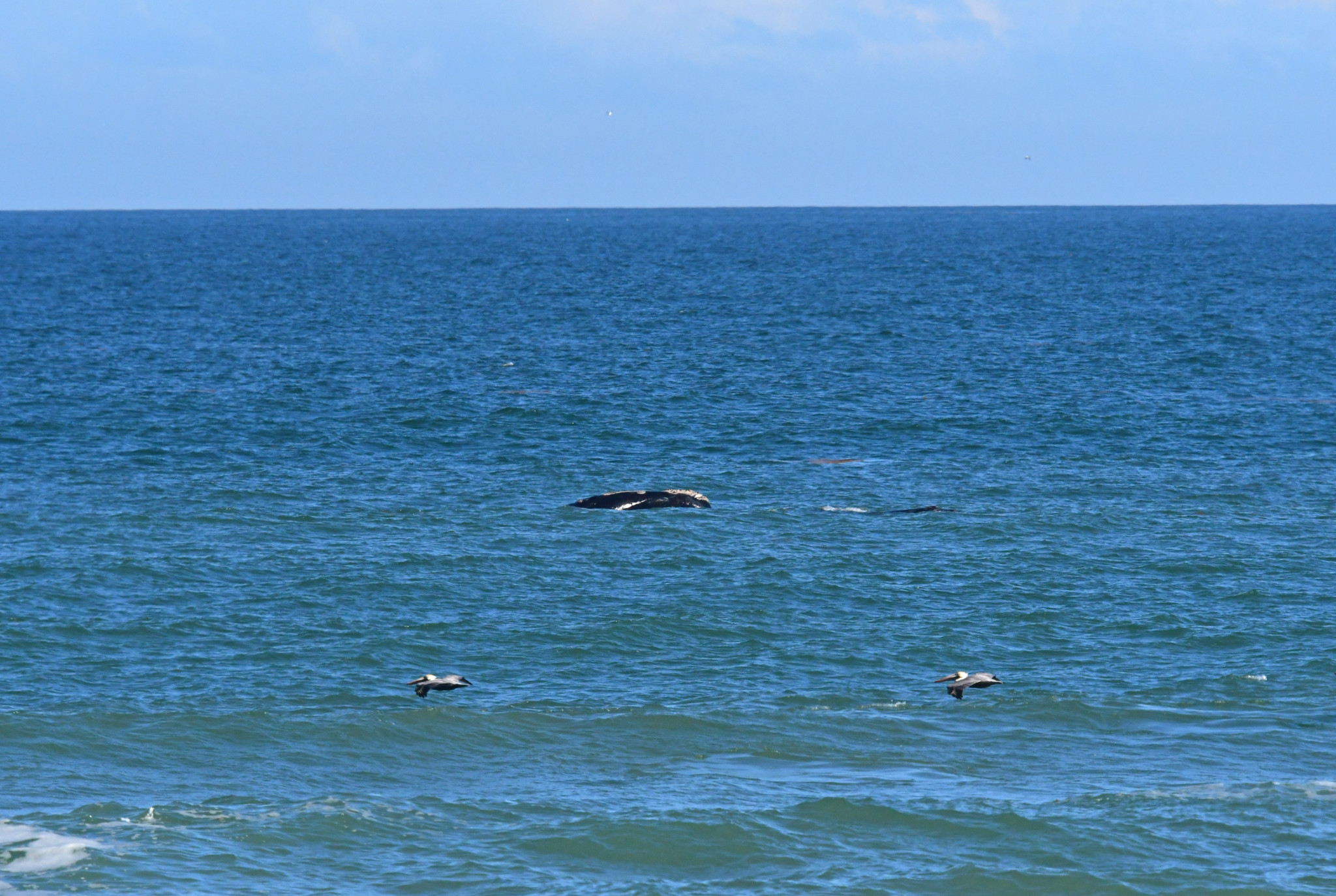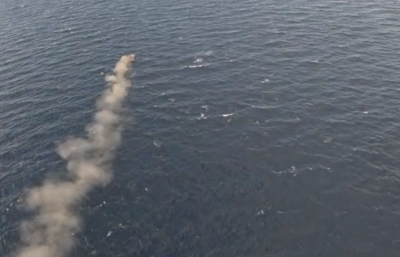The North Atlantic right whale population off Florida’s East Coast is going through a baby boom, according to the Florida Fish and Wildlife Conservation Commission, which announced that its team spotted the fifth calf of the current birthing season last week.

The calf of right whale Catalog #1204 lifts its chin onto its mother’s head. Body contact between mothers and calves is very common. This pair was sighted on January 17, 2019 approximately 3 nautical miles off Amelia Island, FL. Florida Fish and Wildlife Conservation Commission photo.
The commission has been documenting calf sightings for the public on its Flickr page.
"Volunteers with Sebastian Inlet State Park sighted a mother-calf pair February 5, 2019, just off the beach," wrote the organization. "[The mother whale] is at least 8 years old, and this is her first known calf."
North Atlantic right whales are listed as endangered, with an estimated 440 known whales in the ocean in 2012 and no newborns noted last year — so five new whale calves is a significant birthing season. In 2017, five calves were counted.

Right whale Catalog #2791 and her less than 2-week-old calf sighted 10 nautical miles off Fernandina Beach, FL - January 6, 2019.
Florida Fish and Wildlife Conservation Commission photo.
“Each fall, some right whales travel more than 1,000 miles from their feeding grounds off the Canadian Maritimes and New England to the warm coastal waters of South Carolina, Georgia, and northeastern Florida,” according to the National Marine Fisheries Service. “These southern waters are the only known calving area for the species — an area where they regularly give birth and nurse their young.”
“Whaling is no longer a threat, but human interactions still present the greatest danger to this species,” NMFS reported. “The leading causes of known mortality for North Atlantic right whales are entanglement in fishing gear and vessel strikes.”
While whale entanglements in fishing gear were down in 2017 across the country, Northeast lobstermen have been under fire and working to continue decreasing incidents. Canadian fishermen have been targeted and asked to adapt more whale-friendly fishing policies, as well.
Meanwhile, a calf has also been spotted among the West Coast's southern resident orcas. Named L124, this baby whale is estimated to be about two months old. The survival rate is about 50 percent for southern resident orcas, and the outlook for L124 is yet to be determined.







